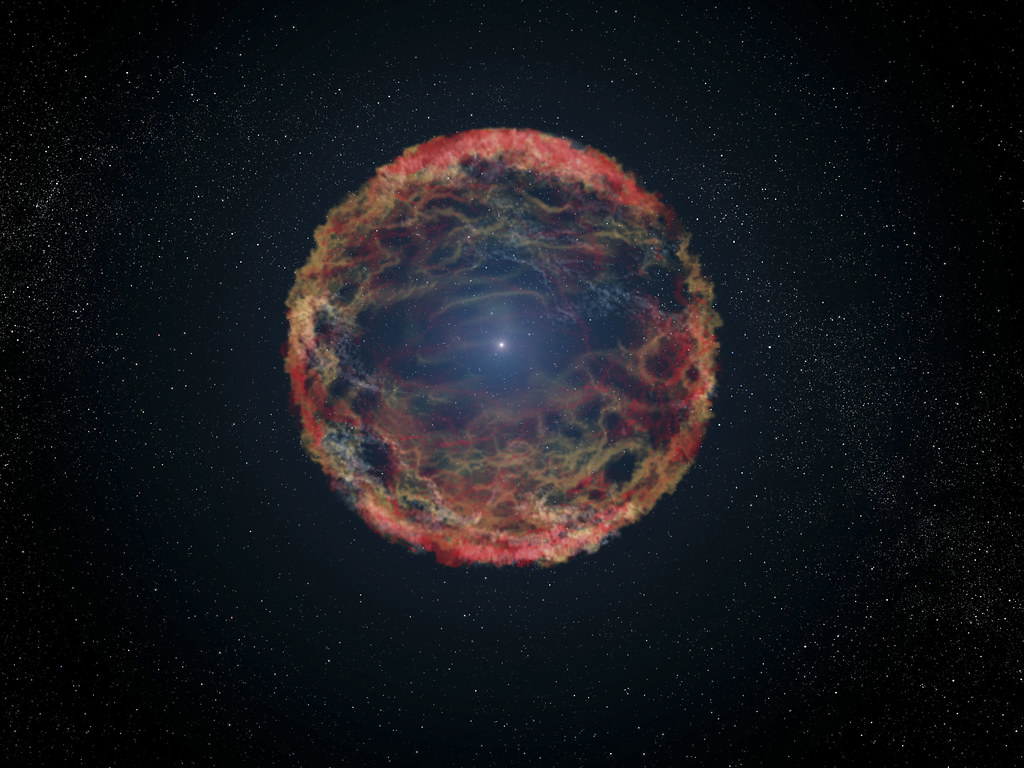How familiar is the night sky to you? Though many Americans can easily point out the Big Dipper or Orion's Belt, even well-known patterns such as the Summer Triangle might escape quick identification. Fortunately, apps and other resources are plentifully available, which solve most of the problems stargazers and amateur astronomers might face.
But, what if a star disappeared suddenly? Or, more interestingly, seemed to suddenly show up out of nowhere? In her recent presentation, Professor Mary Kertzmann provides a breakdown of a star that will soon seem to do just that. She outlines the process in how T Corona Borealis (TCrB) will experience a nova, increasing in brightness up to a factor of 10,000 times, appearing in the Corona Borealis constellation before fading away in the coming months.
A host of unlikely factors contribute to TCrB’s dramatic entrance. For one, the nova phenomenon is only possible in binary star systems, where one star is a large red giant and the other is a white dwarf. In the life cycle of stars, red giants are nearer to the end, as their cores collapse and outer gas layers dramatically expand. For context, Kertzmann explains that our own star (currently about halfway through its life) will reach Venus in its diameter when it eventually becomes a red giant.
When red giants finally use up the majority of remaining fusion materials, their outer layers terminally expand, leaving only the hot, super-dense core behind, known as a white dwarf. Kertzmann again refers to our own sun, which, when it becomes a white dwarf, will collapse to only the size of earth, with intense gravitational forces up to a million times stronger than now.
When a white dwarf and red giant are both in the same star systems, proximal encounters can result in the white dwarf pulling hydrogen from the red giant’s outer layers, resulting in a short burst of fusion activity from the white dwarf. This fusion period culminates in a violent expulsion of energy, returning the white dwarf to an inactive state and creating a nova effect visible in the night sky.
Critically, TCrB is a recurring nova, meaning that it happens consistently in a repeating period of time. In TCrB’s case, it has a nova event approximately every 80 years. Out of the known 400-plus novae in the galaxy, only around 10 have been identified as recurring novas, making them a much rarer variant of stellar phenomena. TCrB is special for other reasons as well, however; astronomers have many unanswered questions about the mass transfer between stars and whether the white dwarf actually gains mass in the process. The star is also one of the only recurring novas visible to the naked eye, and may be one of the oldest recurring novas, with a possible sighting dated to the 13th century. Furthermore, TCrB possesses a unique “pre-eruption high state,” characterized by a recordable radiation spike before the actual nova.
Considering that TCrB’s last nova was 78 years ago, and its pre-eruption high state has been recently observed, Kertzmann anticipates the nova event to occur between April and September, at which point it will be easily observable in the night sky. To search for the nova, follow the arc of the Big Dipper to Arcturus (the North Star), then cut directly left towards the Summer Triangle.
As for Kertzmann, she’ll be working with the Veritas telescope system in Arizona to gather electromagnetic data from the nova. Nonetheless, she emphasizes the nature of the phenomenon more than the numbers, emphasizing, “It’s an exploding star you can see!” From both academic and casual perspectives, TCrB offers powerful and unique insight into natural phenomena. Fortunately, stargazers who miss it will have another shot in 2104 to check the event off their list!



